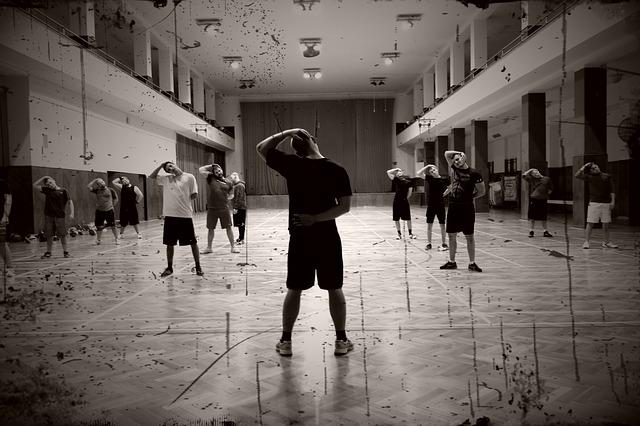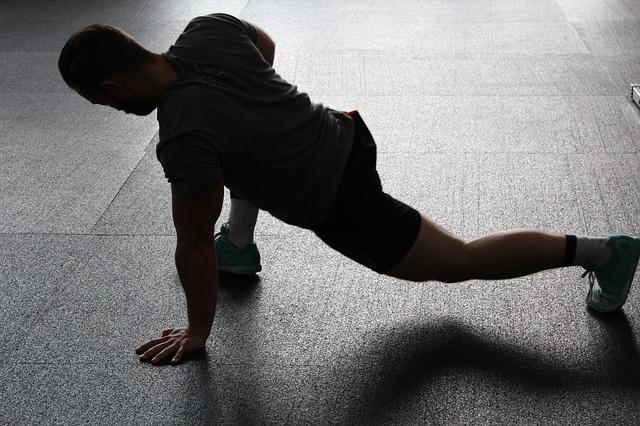What About Cooling Down?
While secondary in importance, cooling down post-exercise is a great way to finish off your work out
Cooling down helps us transition from the intensity of working out to the slower pace of relaxing and going about your day. If your work out is a fluid story, then the cool down is the feel-good ending, where you revel in a state of raised endorphin release. But before you rush off to shower, or on to the next activity, take a second to practice deep breathing and perform a few gentle stretches.
Cool down stretches
The stretching involved in the post work-out period is of a more static nature than the warm up. Because your muscles have already been put through some form of movement beyond the norm, we want to focus on lowering the heart rate and gently stretching the parts of the body which may have incurred stress during the workout, especially the lower back, hips and shoulders. Exercises including the child’s pose, piriformis stretch and reclining twist are low key movements that relieve any lingering pressure and help you relax.
At Holmes Chiropractic, we help you feel your greatest, no matter the activity.
It makes sense that if you are experiencing pain your likelihood for exercising is lower. We want to help you overcome any physical limitations that are gumming up your fitness plan. Through chiropractic adjustment, we help keep the spine aligned and the nervous system functioning correctly- this goes along way to stop pain signals resulting from nerve impingement. By working on proper body mechanics and treating tense muscles, we keep your chance for injury low and your motivation on the upswing!
Dr. Randall Holmes, D.C.
The Importance of Warming Up
Warming up is more important in winter!
Frozen muscles are not productive muscles and with winter fast approaching, it’s time to up your warm up game. Reasons why you want to pay extra attention to warming up include remaining injury free and getting the most out of your work out this winter. Cold muscles are more likely to strain under stress and are less likely to provide you with the optimal strength you need to excel with your fitness plan.
Staying loose means being patient
For building muscle or preventing injury, muscles always respond better to a gentle warm up rather than a blitz. This holds more gravity in the winter, when muscles need a bit more time to truly warm up. Pay close attention to warming your body up as a whole: as body temperature rises, so too will the temperature of your muscles, loosening them up so that they can contract and relax more efficiently.
The warm up is worth it.
The extra minutes you spend during warm up will pay massive dividends when you reach the end of winter injury free. At Holmes Chiropractic, we want to show you how a solid warm up routine can make all the difference in the prevention of injury and in boosting your athletic performance. If you need extra attention to any part of your body, whether it be restoring balance to your spine, treating tight muscles or improving range of motion give our office in Houston a call to schedule an appointment today.
Dr. Randall Holmes, D.C.
The Health of your Neck
Where does neck pain come from?
Neck pain is often symptomatic of a deeper lying cause; you may be experiencing symptoms of pain in the neck, but they are very likely caused by a misalignment elsewhere. Your head could be stuck forward in a position that undermines the stability of your spinal column; your pelvis may be tilted forward causing the neck to over correct in an effort to maintain horizontal balance; this is before even considering more serious conditions such as degenerative disc disease, herniated discs or more intangible factors including viral infection in the throat, creating lymph node swelling that can also cause neck pain. Myriad factors lead to the presence of neck pain butregardless of where it is coming from, it is important not to ignore it or shrug it off.
Chiropractic is about detecting and addressing the underlying causes rather than just the symptoms.
At Holmes Chiropractic, it is our job to determine where exactly the pain is coming from and what to do about it! This often means an evaluation of the body as a whole: neck pain is often the end point for a road map of inadequate posture and weak muscles. We start by helping you learn how to hold your head- not forward with the shoulders rounded but balanced atop the spine- and training the muscles which can hold it tall and proud. Next we focus on load-bearing joints; often we treat people with a set of shoulders and hips that have been trained through repetition to literally destabilize the spine: shortened hip flexors and hamstrings are pulling the lower back out of alignment, while the upper back is in a state of tension caused by dysfunction in the trapezius muscle. All of this is causing the muscles of the upper back and neck to tense up. resulting in the stiffness and pain with which many desk-bound workers are so familiar.
Seeking harmony for the whole body.
It is an inconvenient truth that we have to “relearn” how to use our bodies, but we shouldn’t feel shame about it and we certainly shouldn’t feel alone in our quest to fix it! If you are struggling with where to start, we urge you to let us do the leg work for you: detecting the root of your pain and devising a plan to reverse it. If you are interested in finding out more, give our office in Houston a call to schedule an appointment today.
Dr. Randall Holmes, D.C.
A Tight Trapezius
Pain and tightness in the shoulders and upper back is a problem created and perpetuated by mechanical and muscular shortcomings, particularly to do with the trapezius, a trapezoid-shaped muscle that occupies the center of your upper back. The upper trap is the part that starts in the back of your head and attaches to the collarbone and it causes problems when it is over-activated and the other parts of the trapezius are under-activated or not used at all.
This problem is particularly pronounced in desk workers who spend hours a day sitting, often with poor posture; the upper trap is constantly contracted, pulling your shoulders out of position and making it increasingly difficult for the middle and lower traps to assist in shoulder stabilization. In this scenario, the burden of shoulder articulation and stabilization is further shifted onto the upper traps, while the other parts of the muscle become extremely weak. You see a pattern developing?
At Holmes Chiropractic, our job is to break you out of this pattern, by targeting the trigger points which develop in the upper traps and focusing on establishing good posture as part of your routine. By maintaining awareness of your shoulders’ position throughout the day, you can ensure that this complex network of muscles is working in harmony to support your upper back and prevent it from becoming rounded. We focus on dispelling nerve irritation through chiropractic adjustment and work on strengthening and stretching the muscle as a whole so that posture is easier to maintain.
Pain is a signal that tells you something is wrong- often when we experience tightness in the shoulders, it is not enough to brush them off and let the tension accumulate further. It will likely reach a breaking point and the smart person would do something about it before it reaches this point. If you are tired of tight shoulders, give our office in Houston a call to schedule an appointment today.
Dr. Randall Holmes, D.C.
Staying Active as Winter Approaches
With winter fast approaching and the holiday season in full swing, it is important to make a concerted effort at maintaining your activity levels. Even if temperatures remain more mild in Houston than other parts of the country, it is still conceivable that levels of activity will drop when the hours of daylight are considerably fewer, giving you a shorter window in which to exercise comfortably outdoors. Add to this the fact that calorie intake is higher in the period between Thanksgiving and the New Year, and you can see why winter fitness is important for preventing weight gain and combating the aches and pains that come with extra hours spent sedentary. If we are faced with spending more time inside, it is important to adjust our patterns of exercise.
- Getting creative in the house: Make the house a sanctuary of health by stretching and exercising regularly to keep the immune and nervous systems up and stress down. a
- Recreating with the family; taking the dog for a walk, going ice skating, etc. Activities that get you excited about winter rather than
- Consider indoor sports or seek out fitness programs on DVD or YouTube with exercises that can be done from the comfort of the living room.
- Yoga, for keeping the muscles toned and flexibility maintained.
- Vitamin D: Take advantage of sunny days by getting outside for walks with the family, but also use diet to keep D levels high for calcium absorption and bone health!
Furthermore, staying fit is a great way to fend off seasonal illness that can keep you bedridden and miserable. Don’t let your body fall by the wayside this winter; it is important to follow up on any fitness gains achieved during the summer. For help getting motivated, or resolving physical limitations that are holding you back, give our office in Houston a call to schedule an appointment and ensure that your body is in prime shape through the winter.
Dr. Randall Holmes, D.C.
Planking with Proper Form
We’d like to say all exercise is good exercise but the fact is that good form is essential for reaping all the benefits of a given movement and can even prevent injury from occurring. Take the plank for example: an exercise which is generally agreed upon to be beneficial for people interested in core strengthening and reducing lower back pain. From the chiropractor’s perspective, the benefit of regular planking is three-fold:
- Increasing core strength and stability
- Reducing back pain
- Increasing flexibility, balance and posture
All planks are not created equal, but a properly performed one will contract every layer of the abdominal fascia with very little movement required, strengthening the core and reducing pain in the lower back while also increasing the flexibility of posterior muscle groups. So what are the elements of a basic plank?
- Elbows directly under shoulders, wrists aligned with elbows
- Push body upward and hold chin close to neck
- Contract your abdominals and squeeze your glutes and thigh muscles.
- Hold 20-30 seconds, no longer. Rest 1 minute, repeat 3-5 times.
A helpful thing to keep in mind when attempting to find the right form is to pull in your belly button. This helps to contract the deepest layer of muscle that you are targeting and helps you get the full benefit of the stretch. Planking regularly will help you experience less pain and make sitting up straight easier. Adding a new movement into your routine should always be done with calculated consideration; at Holmes Chiropractic, we can show you the form that will help you achieve 100% benefit from every movement.
Dr. Randall Holmes, D.C.
Hot and Cold: Managing Back Pain
People who suffer from chronic back pain know that there is no magic wand for vanquishing pain- in fact, even the most proactive people, those who stretch and exercise and diet to account for their pain, can still fall victim to a flare up. While suffering through the pain is always an option, we recommend taking advantage of your resources to fight pain whenever and wherever it happens. At Holmes Chiropractic, we find that the most effective techniques for managing pain are those tried and true methods which are always worth repeating: take ice and heat, for example. The point of alternating ice and heat (in that order) is to relieve pain and induce the healing process, but it needs to be done properly:
- Ice relieves pain, swelling and inflammation. When we apply ice, a process known as vasoconstriction happens in which the blood vessels narrow, muscles flex and inflammation is reduced. We recommend applying an ice pack (or an ice towel) to the affected area for 10-15 minutes 3 times a day, and particularly after exercise.
- Heat is effective at encouraging muscle relaxation and stimulating the healing process. Heating an injurious region essentially does the opposite of icing: through vasodilation, the blood vessels are opened, allowing an influx of healing nutrients and oxygen. Remember that moist heat is superior to dry heat and to apply it for 15-20 minutes at a time to achieve pain relief.
Remember that while resting, icing and heating is important for pain relief, so is movement! Movement is an effective medicine for healing because it fights the stiffening and aching of muscles that accumulates when we stay still for hours at a time.
Dr. Randall Holmes, D.C.
Stress Management
When your resolve is tested, how do you respond? Even your dream job would cause you stress at some point, and we all usually face the quandary of too much work and too little time. Stress treats everyone differently but the best thing anyone can do is to arm themselves with techniques for managing the symptoms and minimizing the causes. What do I mean by minimizing the causes? Well take breakfast for example: the cycle of stress starts before you even walk out the door, with the anticipation of the day to come. If you skip breakfast, or opt for something insufficient such as coffee and a croissant, you are not giving your body or brain the fuel necessary to perform under pressure and it sets a bad precedent for the rest of the day.
Techniques for managing stress on the job:
- Micro-breaks: can you spare 2 minutes to take a brisk walk to the water fountain?
- Making lunch hour sacred: in other words, get away from your desk.
- Chewing gum or something crunchy like an apple: chewing decreases anxiety, while the rhythm and sound increase relaxation.
- Green tea > coffee: coffee can increase anxiety while green tea has a chemical called L-Theanine which inhibits anger and promotes relaxation.
At Holmes Chiropractic, we have a multitude of techniques that help with stress management. Mental stress often causes us to tense up and this can be felt most often in the shoulders, neck and back. Chiropractic treatment seeks to correct spinal imbalance, and release tension with hands-on technique. By regulating the nervous system, we help to treat not only physical dysfunction, but also encourage fluid communication between the brain and body, to help you feel both more relaxed and more productive. While stress accumulation can be rampant, it doesn’t have to define your waking or working life; for help on removing yourself from the turbulent cycle of stress, give our office in Houston a call to schedule an appointment today.
Dr. Randall Holmes, D.C.
Hamstrings
Proper posture is under fire: more jobs require humans in front of computers, more humans seek entertainment from their personal computers, more time is spent commuting and there seems to be less awareness than ever regarding posture and its pitfalls. A region that flies under the radar when it comes to posture is the hamstring. Sitting for hours on end leaves them in a state of perpetual contraction that causes them to shorten and, consequently, pull on the pelvis leading to destabilization of the lower back and misalignment in the lower vertebrae. But how are you to know if your indiscriminate, seemingly chronic back pain is caused by a problem originating in the legs? Try a quick test:
- Sit on the floor with one leg and foot extended, the other folded in the butterfly position.
- Press down on the folded knee and reach for your toes
Can you touch? If not, then chances are your hamstrings are tight and this means different things to everyone. Some people have no problem at all but for others it affects their posture, creates pain and limits movement. At Holmes Chiropractic, we use spinal adjustment to solve any resulting misalignment and work on alleviating nerves from painful compression. From here, we use targeted stretching and strengthening to release the region from tension and prevent future problems. Posture can feel like an uphill battle, but the upside is undoubtedly worth it. Let us help you find some inspiration by calling our office in Houston to schedule an appointment today.
Dr. Randall Holmes, D.C.
Keeping Tension at Bay
Of the approximately 640 skeletal muscles in the body, it is very likely for most people that more than a few of them may be experiencing tension at any given time. Factors that put muscles under stress include:
- Exercise
- Inadequate sleep
- Poor diet
- Poor posture and too much sitting
- Mental exertion
I would like to focus on the first factor, exercise and how it (or the lack thereof) can create tension in the average body. At Holmes Chiropractic, we want people to focus on the three categories of exercise that are most essential to longevity and well-being:
- Cardiovascular exercise
- Strengthening
- Stretching
Anyone who has gone biking for significant mileage can imagine the tension of muscles that builds up quickly between the shoulder blades, affecting the function of the upper back, shoulders and neck; it results from hunching over your bike for miles on end and it hurts. But a smart person would still do the exercise knowing that they are building muscle rather than losing it to atrophy by not exercising at all. At the same time, the cardiovascular quality of the exercise is nourishing muscles by providing them with a steadily refreshing flow of oxygen and boosting circulation. This defeats the build up of lactic acid that results from low oxygen levels and causes painful knots to develop in the back. If you can remember to stretch (before and after) then you are completing the fitness triangle by lengthening muscle and connective tissue and keeping them toned, and also relieving any tension that may have resulted during the exercise.
Exercise is a personal choice and you need to pick the activity that makes you happiest to keep yourself coming back for more. While everyone can use more strength, it is secondary in comparison to the body’s need for cardiovascular exercise and stretching. Regular chiropractic treatment is a valid augment for anyone looking to begin or maintain a fitness plan; adjustments resolve nervous system interference that results from spinal misalignment, and can cause muscle tension in and of itself.
Dr. Randall Holmes, D.C.









